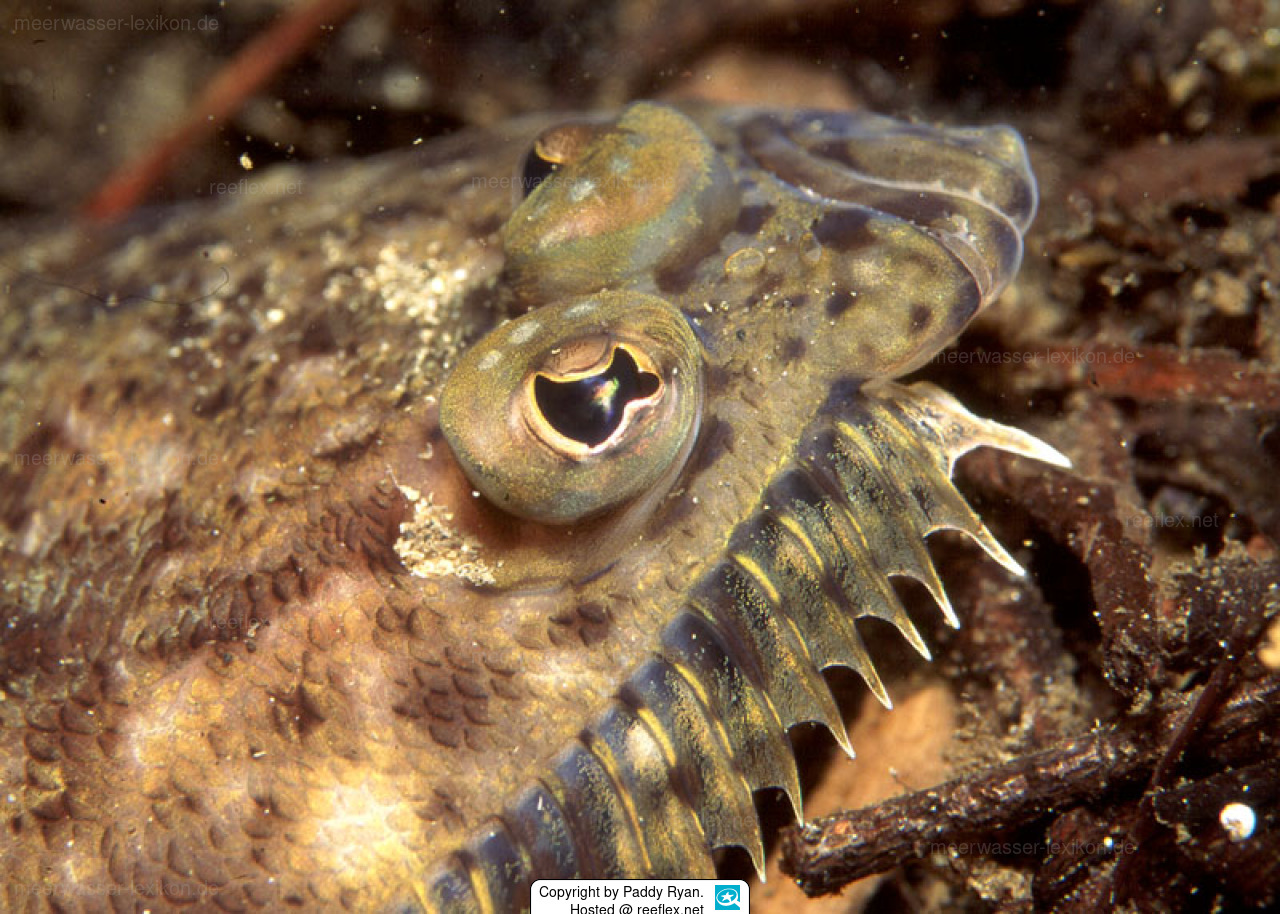Info
Left-eye flounder have a distinct ability to change color, thus they are able to quickly adapt to their background and thereby protect themselves.
Flounder begin their life drifting in the plankton before settling to the bottom and undergoing an amazing metamorphosis.
During this process, the right eye moves from the right side of the body to the left and the fish lies on its right side.
Their common name "left-handed flounder" comes from the fact that they have both eyes on the left side.
In contrast, "right-handed flounder" (family Pleuronectidae) have both eyes on the right side of their body - suggesting that this strategy evolved twice during evolution.
On the feeding list of Arnoglossus scapha, the absolute main prey is the shrimp Periclimenes yaldwyni Holthuis, 1959 and the Australian anchovy Engraulis australis (White, 1790), all other prey indicated in the literature seem to be only occasional food morsels.
The largest predator of this left-eyed flounder is the warty cormorant (Phalacrocorax carunculatus), also called warty cormorant.
Similar species: Lophonectes gallus, in which the front rays of the dorsal fin are elongated to form a crest.
So the early Maori also knew that Arnoglossus scapha is a worthless food fish.
Synonyms:
Caulopsetta scapha (Forster, 1801)
Pleuronectes scapha Forster, 1801
Pseudorhombus boops Hector [J.] 1875
Flounder begin their life drifting in the plankton before settling to the bottom and undergoing an amazing metamorphosis.
During this process, the right eye moves from the right side of the body to the left and the fish lies on its right side.
Their common name "left-handed flounder" comes from the fact that they have both eyes on the left side.
In contrast, "right-handed flounder" (family Pleuronectidae) have both eyes on the right side of their body - suggesting that this strategy evolved twice during evolution.
On the feeding list of Arnoglossus scapha, the absolute main prey is the shrimp Periclimenes yaldwyni Holthuis, 1959 and the Australian anchovy Engraulis australis (White, 1790), all other prey indicated in the literature seem to be only occasional food morsels.
The largest predator of this left-eyed flounder is the warty cormorant (Phalacrocorax carunculatus), also called warty cormorant.
Similar species: Lophonectes gallus, in which the front rays of the dorsal fin are elongated to form a crest.
So the early Maori also knew that Arnoglossus scapha is a worthless food fish.
Synonyms:
Caulopsetta scapha (Forster, 1801)
Pleuronectes scapha Forster, 1801
Pseudorhombus boops Hector [J.] 1875







 Dr. Paddy Ryan, USA
Dr. Paddy Ryan, USA


